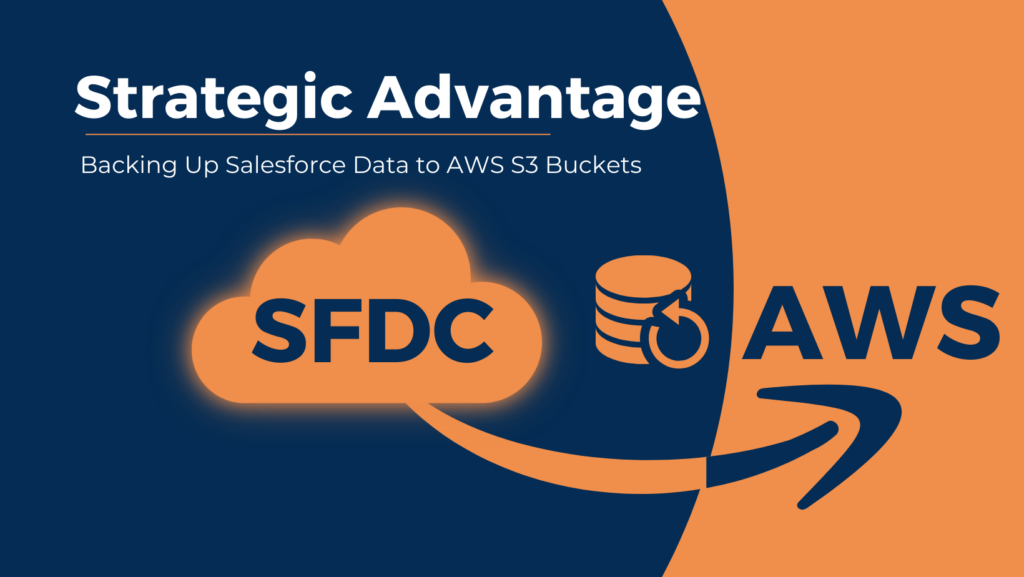
Imagine, if you will, a bustling enterprise bustling with growth, innovation, and an ever-expanding customer base. At the heart of this enterprise’s operations lies its Salesforce data, a treasure trove of insights, customer interactions, and business intelligence. Now, envision the chaos ensuing from data loss: interrupted operations, lost sales opportunities, and a tarnished brand reputation. This scenario, though fictional, highlights a reality many organizations face. Yet, it underscores the pivotal role of robust data backup strategies, particularly the integration of Salesforce with AWS S3 buckets, in safeguarding this invaluable asset. Through this narrative, we explore the transformative benefits of such an approach, emphasizing the strategic value of versioning, centralized backups, and the efficiency gains from automating this critical process.
The Imperative of Data Backup
In today’s digital economy, data is not just an operational necessity; it’s the lifeblood of business strategy, customer engagement, and competitive advantage. For Salesforce directors in enterprise environments, the stakes are exceptionally high. The data managed within Salesforce platforms encapsulates customer relationships, sales forecasts, and market insights. Thus, the loss or compromise of this data can have dire consequences, ranging from immediate operational disruptions to long-term reputational damage.
Backing up Salesforce data to AWS S3 buckets offers a compelling solution, marrying Salesforce’s comprehensive customer relationship management capabilities with AWS’s robust, scalable, and secure storage solutions. This integration ensures that critical business data is not only backed up but also benefits from AWS S3’s durability, availability, and security features.
The Value of Versioning and Shared Locations
Versioning, a key feature of AWS S3, allows enterprises to maintain multiple versions of an object within a bucket. This capability is invaluable for data backup and recovery strategies, providing a granular recovery option should data corruption or loss occur. It ensures that even if a critical piece of data is mistakenly overwritten or deleted within Salesforce, a previous version can be easily and quickly restored from an AWS S3 bucket.
Moreover, centralizing backups in a shared location like AWS S3 enhances data governance and compliance postures. It simplifies access controls, auditing, and data management practices, ensuring that data backups are both secure and readily accessible when needed. This centralized approach mitigates the risk of data silos, ensuring a cohesive data backup and recovery strategy across the enterprise.
The Efficiency of Automation with recipePro
The traditional approach to data backup—manually downloading data or building custom recipes for each data change—is not only time-consuming but also prone to errors. Enter recipePro, an automated backup tool that transforms this cumbersome process into a streamlined, reliable operation. By automating the backup of Salesforce data to AWS S3, recipePro significantly reduces the man-hours required for this critical task. It enables enterprises to focus their valuable resources on core business functions rather than on routine data management tasks.
recipePro not only simplifies the backup process but also assists in building ETL (Extract, Transform, Load) recipes tailored to enterprise needs. This is particularly beneficial for those looking to backup key reports and data into AWS, ensuring that their data is not only secure but also optimized for analysis and decision-making.
Conclusion
In sum, the strategic integration of Salesforce data backup with AWS S3 buckets, enhanced by the automation capabilities of tools like recipePro, represents a significant operational and competitive advantage for enterprises. It not only safeguards critical business data against loss but also ensures its availability and integrity in a secure, scalable, and efficient manner. As enterprises continue to navigate the complexities of the digital landscape, the question remains: How will your organization leverage these technologies to fortify its data resilience and secure its digital future?

